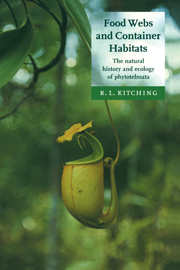1 - Introduction
Published online by Cambridge University Press: 26 August 2009
Summary
Along the Labi Road in the tiny Sultanate of Brunei lies a series of sandy stream beds. Each is raised above the surrounding forest, presumably by eons of silt deposition during occasional periods of inundation and stream flow. But now, in May, the water flow is a mere trickle, winding around patches of tar seepage; here, not the product of human error and environmental insensitivity, but a natural phenomenon reflecting the oil-bearing strata that underlie this region of northern Borneo. But this is the perhumid tropics and wetness is the order of the day – any day. Treacherous quicksands lie centimetres below the scorched white sand and the peat-swamp forest on each side of the stream bed is permanently inundated with tea-coloured peaty water standing thigh-deep around the tangle of buttress roots, fallen trees, scrambling vines and creepers.
I first came to this nutritionally poor but biologically rich ecosystem in 1989. During the day the biological riches, at least of the more obvious kinds, are largely to be inferred rather than experienced directly. The clean smooth sand is criss-crossed with tracks of mammal and bird, reptile and insect: here the measured marks of a monitor lizard scavenging for carrion, eggs and nestlings; there, the dainty steps of forest rats.
Information
- Type
- Chapter
- Information
- Food Webs and Container HabitatsThe Natural History and Ecology of Phytotelmata, pp. 1 - 14Publisher: Cambridge University PressPrint publication year: 2000
